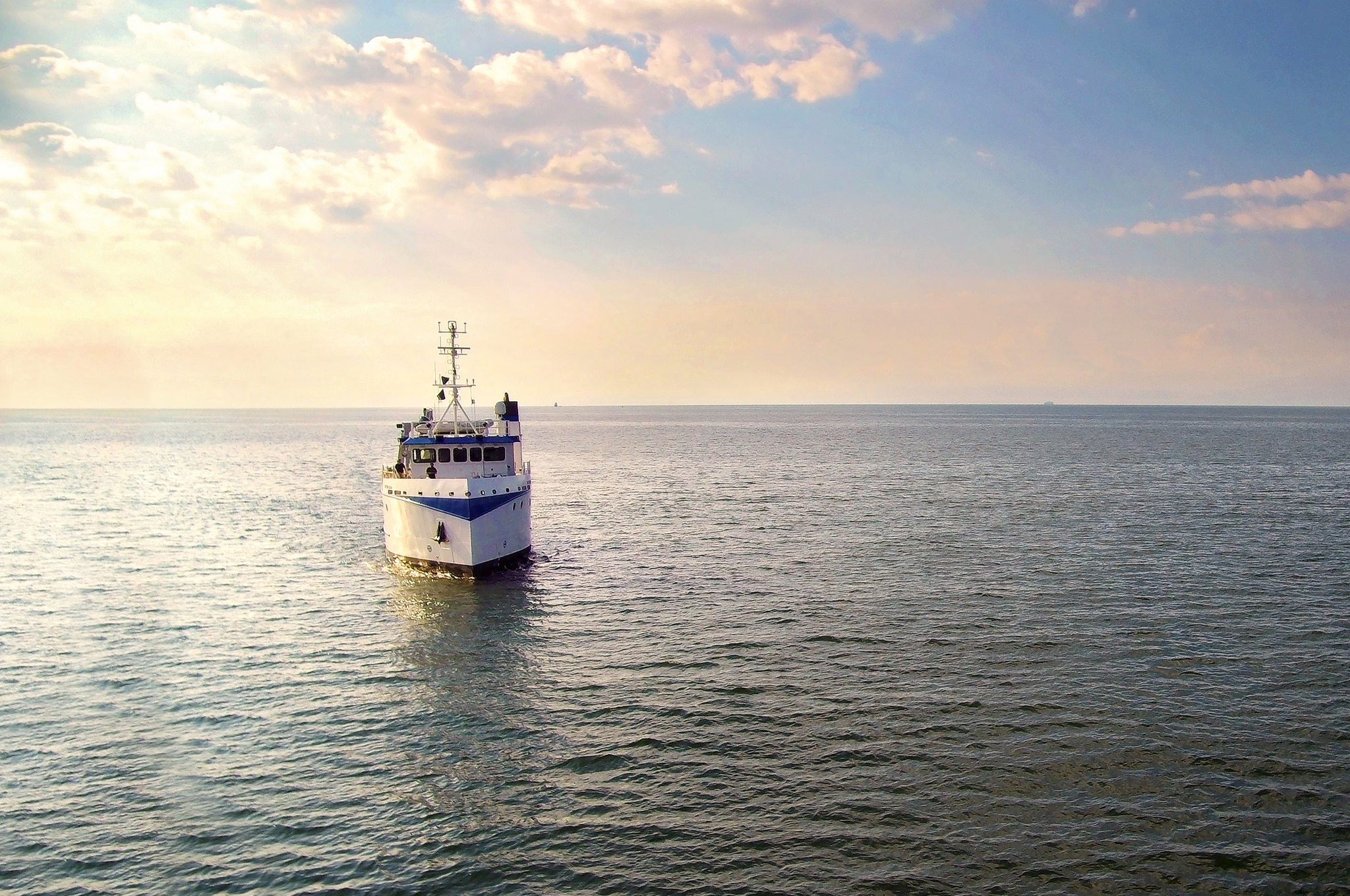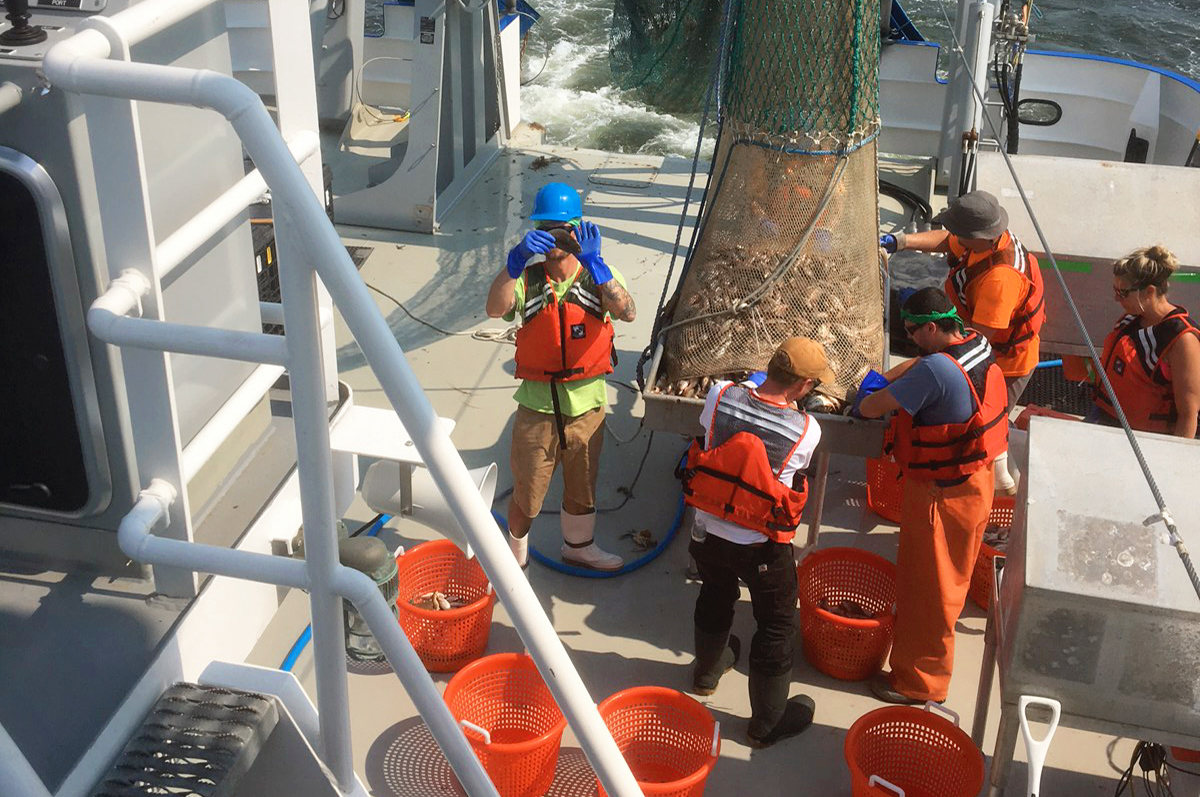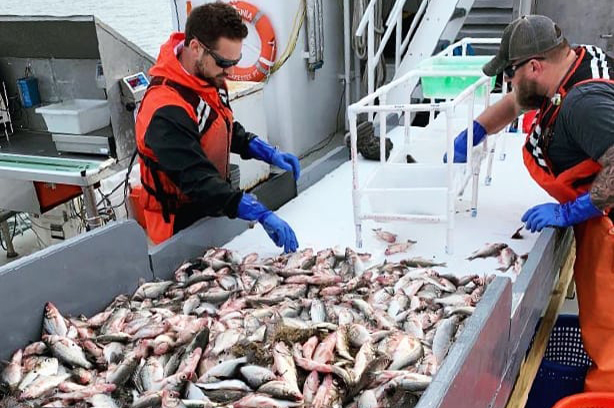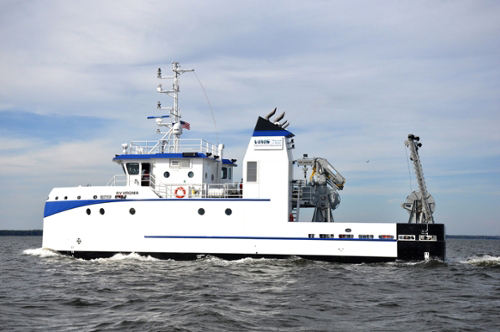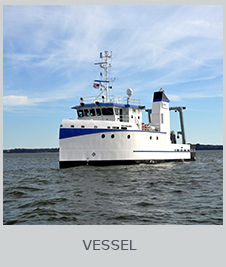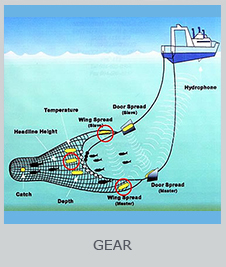What is ChesMMAP?
The Chesapeake Bay Multispecies Monitoring and Assessment Program, ChesMMAP, began in 2002 and was developed to assist in filling data gaps, and ultimately to support Bay-specific, stock-assessment modeling activities at both single and multispecies scales. ChesMMAP was designed to maximize the biological and ecological information collected for several recreationally, commercially, and ecologically important species in Chesapeake Bay. The survey uses a large-mesh bottom trawl to sample juvenile-to-adult fishes from the head of Chesapeake bay at Poole's Island, MD to the mouth of the Bay just outside the Chesapeake Bay Bridge Tunnel.
Survey Goals
|
||||
Field Methods
|
||||
GIS Maps
|
||||
Abundance Indices |
||||
Data UsesFishery-independent data resulting from the ChesMMAP Trawl Survey have been requested by stock assessment scientists for a variety of species. Again, because of the relatively short time series currently available for this survey, the incorporation of abundance indices generated by the ChesMMAP Survey has only been possible for two species: scup and weakfish. Similar to the situation with NEAMAP, the biological data produced by this survey have been included in the assessments for alewife, blueback herring, bluefish, butterfish, summer flounder, scup, spot, and weakfish. The assessment scientists expressed their desire to include these data in future assessments as well, again indicating that time series length, and not data quality, is the issue at hand. Currently, ChesMMAP survey data are being used to guide the assessments for Atlantic croaker and black drum. An informal assessment of sheepshead data collected by ChesMMAP has been supplied to the Virginia Marine Resources Commission to support review of current management regulations for this species in the Commonwealth, and summer flounder catch and length-frequency data have been used to support the liberalization of recreational harvest regulations for 2011. From the perspective of ecosystem-based multispecies modeling and management, ChesMMAP diet data have been used to support the development of a fisheries ecosystem model of Chesapeake Bay and a multispecies virtual population analysis of Atlantic menhaden along the U.S. east coast. These data have also been used to both formally and informally quantify the predatory impact of fishes on their prey (e.g., striped bass, weakfish, and bluefish consumption of menhaden; striped bass impact on blue crabs). It is expected that the inclusion of ChesMMAP diet data into multispecies efforts will increase as these relatively new assessment approaches continue to develop. Finally, ChesMMAP abundance and biological data for summer flounder were used to explore yield-per-recruit and egg-per-recruit analyses for this species under a variety of regulatory scenarios for the recreational fishery. The results of this study were requested and reviewed by the ASMFC in their discussions of a possible slot limit management regime for this species. Uses of Data Generated by the Chesapeake Bay Multispecies Monitoring and Assessment Program (ChesMMAP) Trawl Survey, 2007-2017 Assessment Related (NMFS & ASMFC) Data requested for and incorporated into past assessments
Data requested and evaluated for but not incorporated* into an assessment *Due to short time series of data & relatively low catches available, NOT because of data quality.
Data requested for an assessment & results currently pending
Virginia-Specific
Additional Research Efforts
|
||||
Reports |
||||
FundingChesMMAP is currently funded by Wallop-Breaux funds from the Virginia Marine Resources Commission and the Commonwealth of Virginia.
|

